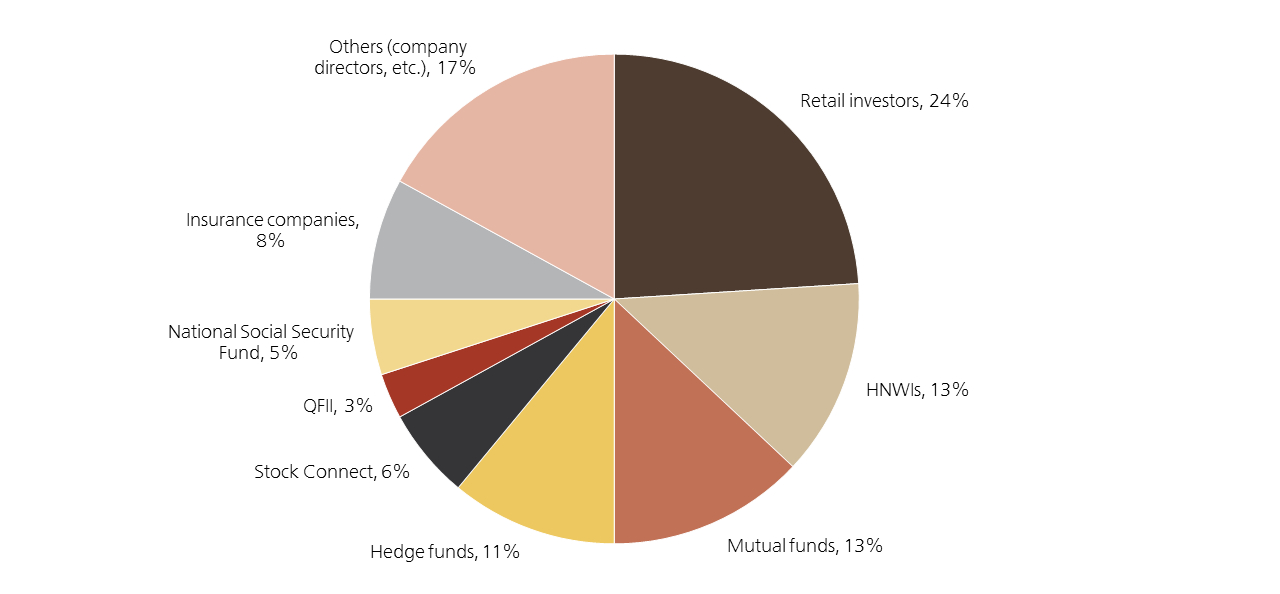2024 saw key financial market reforms including changes to the Qualified Foreign Institutional Investor (QFII) and RMB Qualified Foreign Institutional Investor (RQFII) investor initiatives operated by the Chinese government.
These reforms fundamentally change the operating characteristics of the China A-share market by allowing hedge fund investors to short with domestic brokers and secure margin on a range of securities that were not available in the past.
The QFII and RQFII reforms will drive a significant increase in liquidity in China’s A-share markets and create opportunities for long/short investors like ourselves to exploit inefficiencies in the market, which is a compelling proposition as China’s A-share market is driven by attractive investor dynamics.
Until recently, it was difficult for hedge funds to transact in underlying A-shares aside from simple long positions, so there are relatively few participants actively hedging and shorting in specific securities. Additionally, the China A-share market is dominated by retail investors with approximately 165m registered individual investor accounts, and approximately 55m of these actively trade every day is estimated.
The dominance of retail investors creates dramatic swings in momentum and valuation skews which can present unique alpha opportunities for relative value investors on both the long and short side of portfolios. Onshore market turnover is large – and increasing one goal of the recent reforms is to increase turnover on China’s exchanges – an important metric that should allow Chinese markets to attract flow from institutional investors.
China’s markets are under-researched
There’s not a lot of analyst coverage of the China A-share market, particularly of mid/small cap companies, and according to Reuters, almost 70% of companies are covered by three analysts or less. Additionally, only about 300 to 400 companies have English language research coverage, a small percentage of the overall market, which means the visible opportunity set for global investors remains small.
So, taken together, these four factors – high retail participation, improving liquidity, reforms will allow shorting and margining, and low analyst coverage – will combine to create a “golden age” for relative value investors. These dynamics will be prevalent over the long term; and very little substantive change to them in the next three to five years is projected.
A good example is retail dominance in the market: while the influence of institutional investment capital is growing, it will likely take years for it to overtake retail investors as a key driver of the market. There is a compelling window of opportunity to exploit this imbalance over the longer term.







